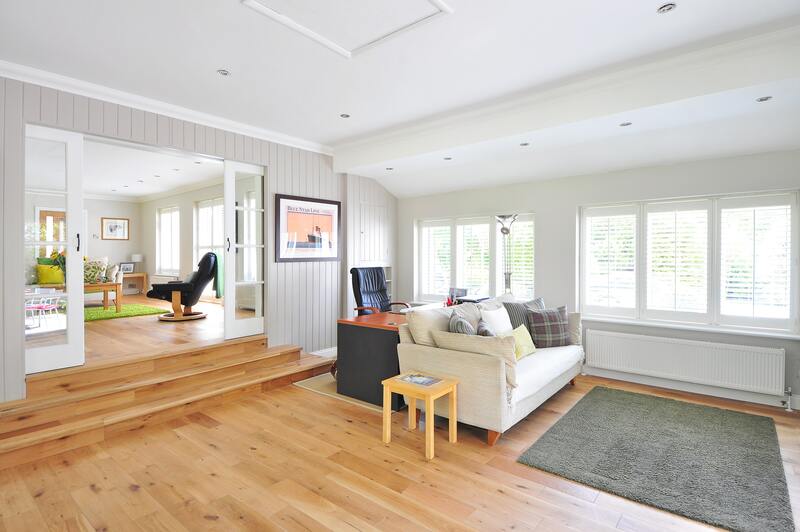There is a particular procedure that you can consider if you are questioning yourself on what to do when your hardwood floor is water damaged. Wood flooring is famous among interior designers and homeowners, but they are hard to maintain.
Water is one of the weaknesses of hardwood floors. In cases where they are exposed to water, it is easy for them to be damaged.

So now, if you think about what you should do if your hardwood floor is exposed to water, there are a set of procedures that you can consider following. Doing the process will be your advantage in saving your floors.
Take a little bit of your time to read and understand the factors you can consider in dealing with your water damaged hardwood floors.
Things To Do With Water Damaged Hardwood Floor
Hardwood floor is considered an attractive and outstanding material used for houses. Most people find this as their top peak in choosing the best flooring.
However, there are inconveniences brought by this kind of flooring. This usually happens whenever hardwood floors are exposed to water.
Water is indeed a threat to hardwood floors, so take your time to be aware of the steps you can take if water damage happens to your hardwood floor.
Step #1. Assessing the damage
Wood is a sensitive material that can absorb moisture whether it comes from any water. Assessing it can help you take action immediately before it becomes worse.
Some signs that you can rely on are cupping and crowning. These two can prove that there is really an issue with your flooring.
Cupping refers to the idea when the edge of a floor is lifted higher than the others. It is actually one of the signs indicating that there is a problem with your base.
If your floor absorbs the moisture, there is a huge possibility that the flooring will expand, causing them to swell and break. On the other hand, crowning happens when the flooring has an arched appearance.
Crowning is not only caused by moisture, but they are also caused when water is poured directly into the floor. This proves that hardwood floors are susceptible to water, making them hard to maintain.
If ever you want to have a detailed explanation about the assessing process, you can check out how to detect water damaged wood.
Step #2. Determining whether to repair or replace it
After assessing everything, you have to come up with the right decision. Some flooring may still be repaired, but others will require you to replace it.
To understand it quickly, you can repair the flooring if there is only minor damage. You can just replace the floorboards affected by the moisture and water and proceed to refinish the entire floor.
However, if the damage is severe, you must replace the whole floor and even the subfloor. This is not to waste your money, but this is for your own safety.
Step #3. Find the cause
Before you proceed with any repair and replace action, you should know the cause of the issue. There are various reasons why water and moisture are present in the flooring, so you need to identify this.
Remember that external and internal sources of water are damaged, which are both destructive. This will help you find the perfect method of repairing and replacing your hardwood flooring.
Step #4. Fixing floors
Once you have identified the cause, you can now choose the best method to fix the water damaged floors. You have to attend to the matter as soon as possible to avoid worsening the situation.
Ensure all the needed tools for the repair process, even the basic ones. This includes a brush, gloves, dehumidifiers, vacuum, bucket, and disinfectant.
In fixing the hardwood floor, make sure to remove the surface water first. After removing it, you have to clean the flooring and follow it with treating moldy spots and areas.
When you are finished cleaning the floor and treating the moldy area, you can now proceed with drying the flooring using a piece of drying equipment and wait until it fully dries. Make sure to dry it slowly and naturally to see its effectiveness.
After this, you have to sand the floor in which this technique can help you reduce some existing cuppings. Last but not least, you have to refurbish the entire flooring.
Before refinishing, scrape the paint and scrub the wood. Dry the wood, and once it is done, this is the time when you can refinish it.
If you wish to explore more about the fixing process, you can try visiting how to fix water damaged hardwood floors for more details.
Conclusion
Upon reading all the information above, you already know what to do when your hardwood floor is water damaged. It is never easy to maintain a hardwood floor, but you have to do everything to repair it.
Hardwood floor may not be the ideal flooring due to its sensitivity; however, many people still choose this. The sensitivity of the flooring proves that you have to take responsibility for maintaining it if you want to use them for a long time.
Do not worry because there are procedures to consider that are indeed helpful, but you have to follow them correctly. Please do not attempt to skip any part of it because you will never see the effectiveness.
Above all, you have to take this seriously with patience and dedication.
